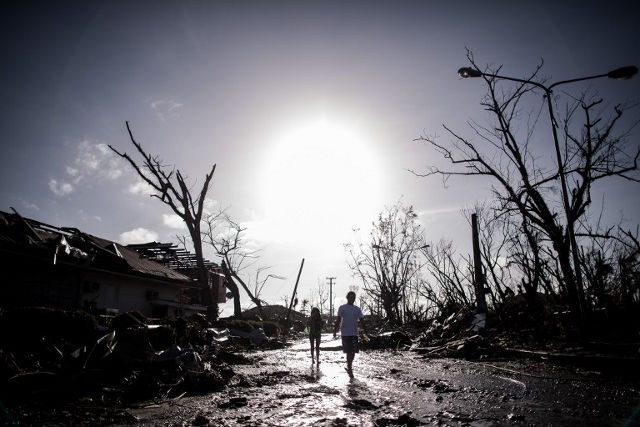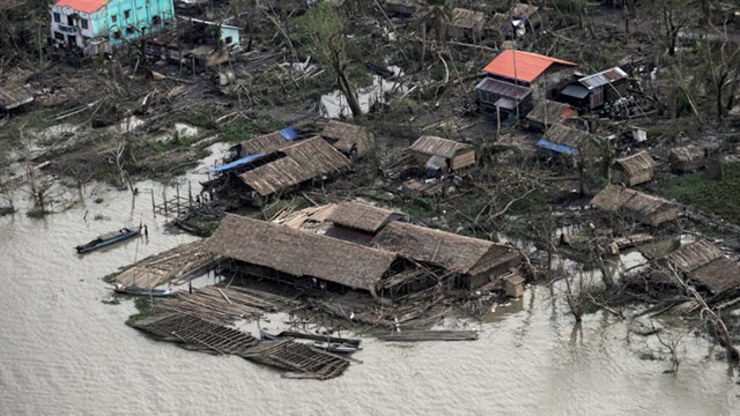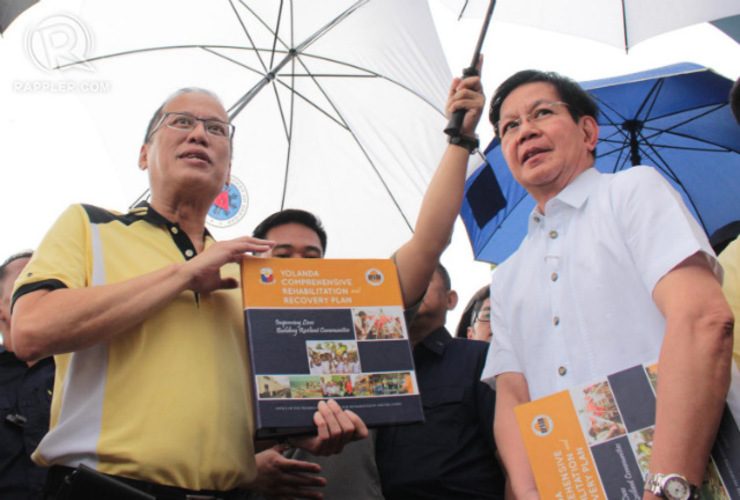SUMMARY
This is AI generated summarization, which may have errors. For context, always refer to the full article.

MANILA, Philippines – Compared to other countries, can the Philippines be proud of its rehabilitation efforts?
Facts show that the Philippines is doing roughly the same as other countries after being ravaged by major natural calamities.
Measuring the complex work of rehabilitation is tricky given the multitude of factors involved, the differences in context, and the accuracy of figures presented to the public.
Natural calamities also cause varying scales of damage depending on the areas most affected and the strength of the calamity.
But a couple of indicators are telling.
For instance, though many have criticized the government for the slow approval of the Yolanda rehabilitation master plan, a look at the approval of similar rehabilitation plans makes the Philippines appear competent enough.
| HAIYAN | NARGIS | KATRINA | |
| Country | Philippines | Myanmar | United States |
| Date of first landfall | November 8, 2013 | May 5, 2008 | August 25, 2005 |
| Strongest winds (1 minute sustained) | 315 km/h | 215 km/h | 280 km/h |
| Death toll | At least 6,300 people | At least 84,537 people | At least 1,833 people |
| Affected population | Around 16 million | Around 2.4 million | Around 1.5 million |
| Affected areas | 171 towns, cities in Eastern Visayas, Luzon | 37 townships in Ayeyarwaddy, Yangon divisions | Gulf Coast states |
| Cost of damage | US$2 billion (P89.6 billion) | US$4 billion | US$108 billion |
| Gov’t rehab budget | US$3.7 billion (P167.9 billion) | No official figure found | US$110.6 billion |
| Submission of rehab plans | 11 months after (October 30, 2014) | 9 months after (February 9, 2009) | 8 to 11 months after (April 4, 2006 to July 26, 2006) |
President Benigno Aquino III greenlighted the Yolanda Comprehensive Recovery and Rehabilitation Plan (CCRP) on October 30, 2014, more than 11 months after Yolanda made landfall.
The US Department of Housing and Urban Development took 8 to 11 months to approve the 6 Disaster Action Plans of the states ravaged by Hurricane Katrina in August 2005.
The joint rehabilitation plan post-Cyclone Nargis was released by the Myanmar (Burma) government, ASEAN and international agencies 9 months after the storm hit in May 2008.
Relief to recovery
The time it takes for countries to transition from relief phase to recovery phase is also a comparable benchmark.
The “recovery stage” is defined by the United Nations International Strategy for Disaster Reduction (UNISDR) as “the restoration, and improvement, where appropriate, of facilities, livelihoods and living conditions of disaster-affected communities.”
It is supposed to come after the “relief” or “response” phase defined as “the provision of emergency services and public assistance during or immediately after a disaster in order to save lives, reduce health impacts, ensure public safety and meet the basic subsistence needs of the people affected.”

The completion of the Yolanda relief phase was officially announced by Social Welfare and Development Secretary Dinky Soliman and United Nations officials on July 4, 8 months after the storm.
The relief phase for Cyclone Nargis took 6 months, according to the International Federation of Red Cross.
For the Indian Ocean tsunami and earthquake, different sources peg the transition from relief to recovery between April to May 2005 or 4 to 5 months after.

The rehabilitation agencies
Indonesia and the Philippines are similar in that their governments created a special office to lead rehabilitation efforts.
While the Office of the Presidential Assistant for Rehabilitation and Recovery (OPARR) was established in December, a month after the typhoon, Indonesia’s Executing Agency for Rehabilitation and Reconstruction (BRR) of Aceh-Nias was created in May 2005, 5 months after.
But the BFF and OPARR are widely different in terms of powers afforded them. The BFF had the mandate to implement projects, bypass standard government procedures, and manage its own budget.
The OPARR, meanwhile, can only coordinate efforts from national government agencies and non-government groups.
It cannot hold or manage funds or directly implement projects or programs. Rehabilitation czar Panfilo Lacson admitted early on that his limited powers make it harder for him to do his job.
Since its successful recovery, Indonesia has established the National Board for Disaster Management and the Indonesia Disaster Fund (IDF).
The IDF was modeled after the Multi-Donor Fund, a mechanism created for Aceh recovery which pooled funding from various donors and was managed by the World Bank.
In the Philippines, suggestions have already been made for a permanent disaster agency to coordinate relief and rehabilitation.
The government is said to be studying the US’ Federal Emergency Management Agency (FEMA) as a possible model to replace the “ad hoc” National Disaster Risk Reduction and Management Council (NDRRMC).
Other countries took a different approach to rehabilitation. For Cyclone Nargis, efforts were led by a Tripartite Core Group composed of representatives from the Myanmar government, ASEAN, and the United Nations.
The United States, meanwhile, relied on its federal agencies to implement rehabilitation works using specially allocated federal funds.
Long road to recovery
Judging from the experiences of other countries, it may take the Philippines around a decade to fully recover from Yolanda.
A year from the Indian Ocean disaster, some 16,000 permanent homes were built – a far cry from the estimated 320,000 houses destroyed.
A year after Yolanda, OPARR says only 1,252 have been completed out of the 205,128 permanent houses that need to be built.
Two years after the Indian Ocean disaster, Aceh was said to be still “on the road” to recovery. It was only 8 years after the calamity when the World Bank pronounced Aceh’s reconstruction efforts as “highly successful.”
Some Gulf Coast states had also not yet fully recovered from Hurricane Katrina 8 years after the disaster. At the time, some roads, bridges, schools and health care facilities were still being rebuilt, according to the US FEMA.
An Asian Development Bank official recently hailed Yolanda recovery efforts as “moving faster” than Aceh’s.
UN Resident Coordinator Luiza Carvalho, meanwhile, rated Yolanda recovery as “very satisfactory.”
But if there’s one fact that rings out loud and clear from all the white noise in assessing rehabilitation, it’s that the road to recovery is long and difficult.
It may take several administrations, untold sums of money and enormous political will before a full recovery is made. The next question will be: is the Philippines up for the challenge? – Rappler.com
For Rappler’s full coverage of the 1st anniversary of Super Typhoon Yolanda (Haiyan), go to this page.
Add a comment
How does this make you feel?
There are no comments yet. Add your comment to start the conversation.